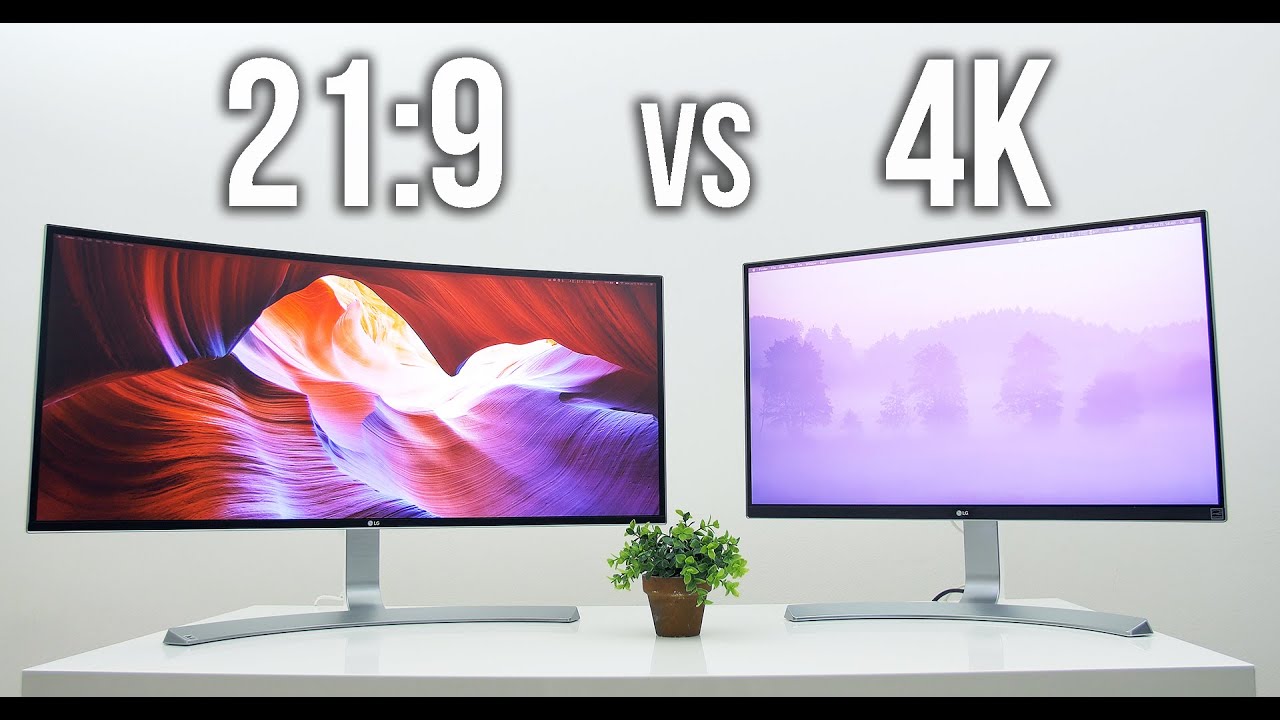When looking for a monitor, options are endless, but figuring out what each monitor excels at is a sure way to help you choose. Gamers and content creators have to figure out the size, the quality, and the level of productivity different kinds of monitors provide. In this article you will find a comparison between ultrawide and 4K monitors in these regards.
In Brief
Ultrawide monitors are known for their sheer size and 21:9 aspect ratio. Perfect for multitasking, and any content that supports 21:9 will look magnificent. 4K reigns king in image quality, though, since it packs a lot more pixels in a usually smaller panel.
Ultrawide vs. 4K: What Are the Differences?
When deciding on which monitor to get, the productivity level is an important part of the equation.
Ultrawide screens are useful when multitasking because of how wide the screen is. You can easily open multiple windows all at the same time, if the kind of work you do requires taking action on one window while keeping your eye on the progress of another one, for example.
4K monitors can’t support as many open windows as ultrawide, since there isn’t that much space. Some people, however, choose to have a dual 4K display, but at the cost of having ugly thick bezels between the two screens.
You may also like:1440p vs 1080p.
Display and Resolution
As the name suggests, ultrawide monitors are known for being more wide than tall, with an aspect ratio of 21:9. The resolution is typically 3440 x 1440 or 2560 x 1080 pixels. There are, however, monitors that reach 5120 x 2160 which is 5K.
The big size of the monitor requires extra desk space, and some of them can be curved for a more immersive experience. They do tend to be higher in price and require more space, though, and not all online content is adaptable to 21:9 aspect ratio, so black bars on the sides are common when streaming videos.
On the other hand, 4K monitors are typically smaller than their ultrawide counterparts, but the resolution is significantly higher at 2840 x 2160 pixels. Colors are more vibrant and texture is topnotch. They usually need equipment that can run 4K in order to put the monitor in full use, especially with games and high quality videos and movies.
One downside is that windows and text can be scaled down because of the high resolution, so some adjustments are usually required from the user’s end.
Catering to Content Creators
For filmmakers and video editors an ultrawide monitor can be very beneficial because it offers a wider look at the timeline. Also, if you’re into making 21:9 films, the ultrawide monitor will be perfect for it.
The 4K monitor for content creation is a definite yes if what you work with is high resolution and crisp images and text. Since a typical 4K monitor can pack millions of pixels more than the ultrawide one, the quality and clarity of your work will be unmatched. That does come with the price of having a smaller display, but there is the option for a 30 inch 4K monitor which can be reasonable.
Gaming
Gaming ultrawide, especially with a curved display, can be quite the experience since there’s a lot more to see. It’s very immersive though not always with the highest graphics settings, depending on what resolution you get at the point of sale.
4K gaming, on the other hand, offers the crispest and most vibrant graphics. If you have equipment powerful enough to run a game in 4K, it’s definitely worth it for the visual experience and smoothness. That doesn’t come with the immersion of ultrawide screens, though; the extra pixels at a cheaper price do make up for the smaller size, nonetheless.
Price
Consider a higher budget when going for an ultrawide display. Ultrawide monitors are not ultra-widespread, yet, and the size adds up to the price. The value you’ll get will be a higher productivity level and a more immersive work and entertainment experience.
If you’re on a budget, though, then the 4K display won’t hurt your wallet as much. As mentioned above, the size is equally proportionate to the price, but even with the biggest 4K monitors you won’t be paying as much as you would for ultrawide ones, since 4K monitors are everywhere and are made by both high end and low end manufacturers.
It is important to reiterate that to run the 4K monitor at full capacity you will need equipment that can do so; keep that in mind while shopping for a 4K monitor.
You may also like : best vertical monitor.
Final Thoughts
Put in mind the size and the resolution of the monitor you need when choosing between ultrawide or 4K display. Ultrawide monitors are bigger than your average 4K screen. They offer a more immersive experience with a higher ability to multitask, but that comes with the need for more desk space, and they’re more expensive.
4K monitors, on the other hand, offer better quality images and a crisper display, making things more pleasant to the eye. They tend to be smaller and cheaper, but adjustments to the scaling of applications and windows will be needed.
Sort your priorities and consider your budget and equipment after reading this article to choose the best kind of display for you.




